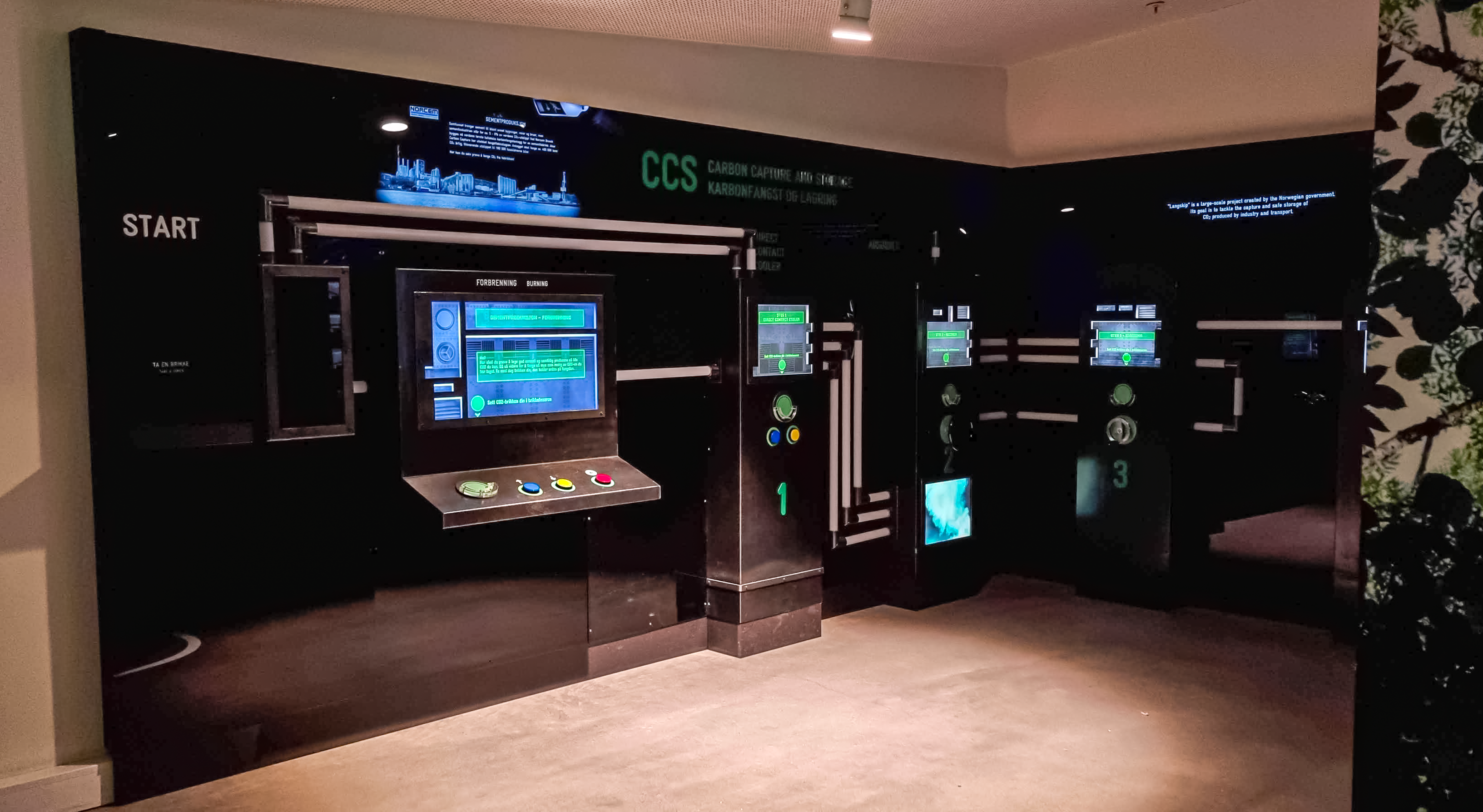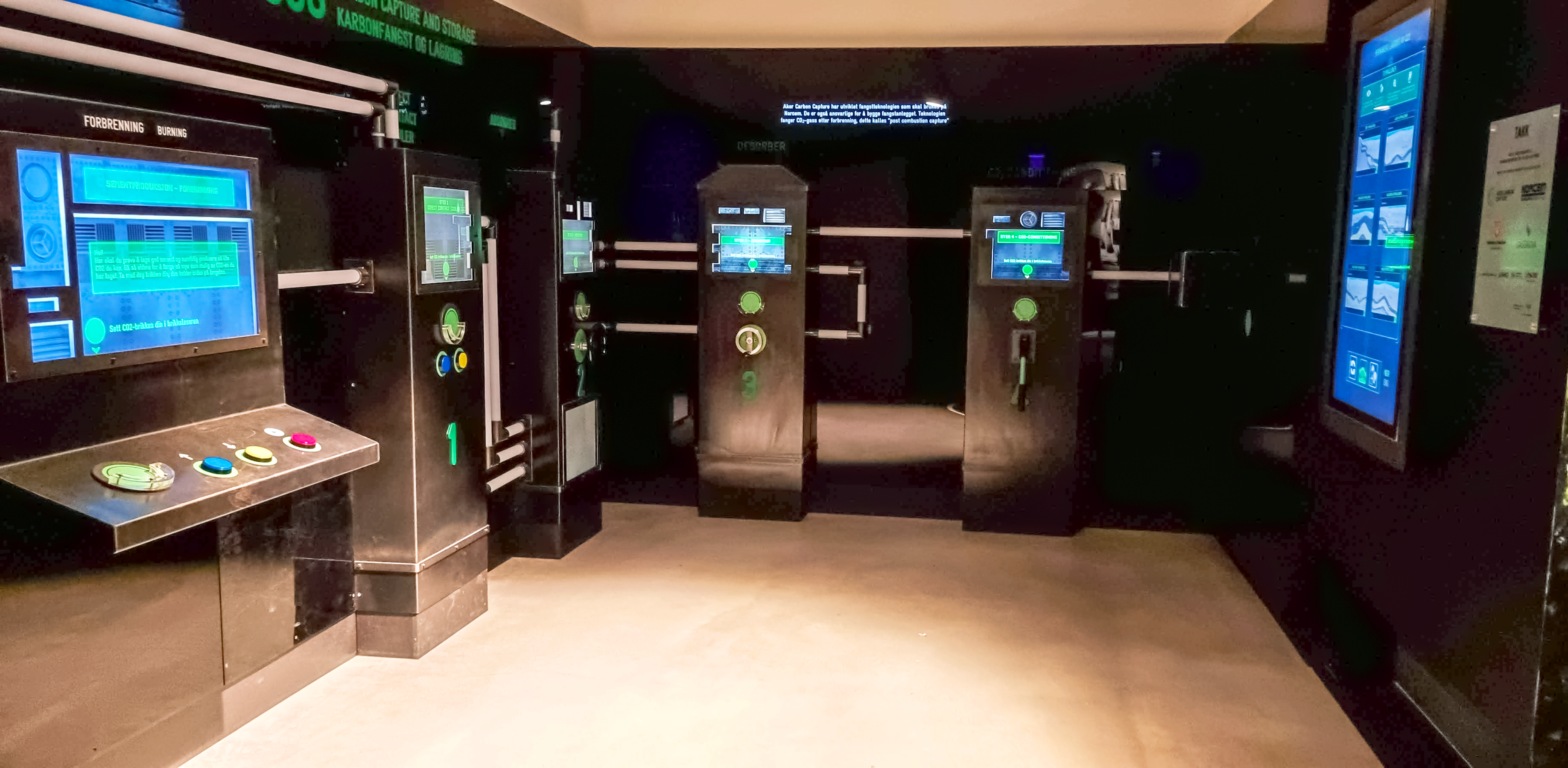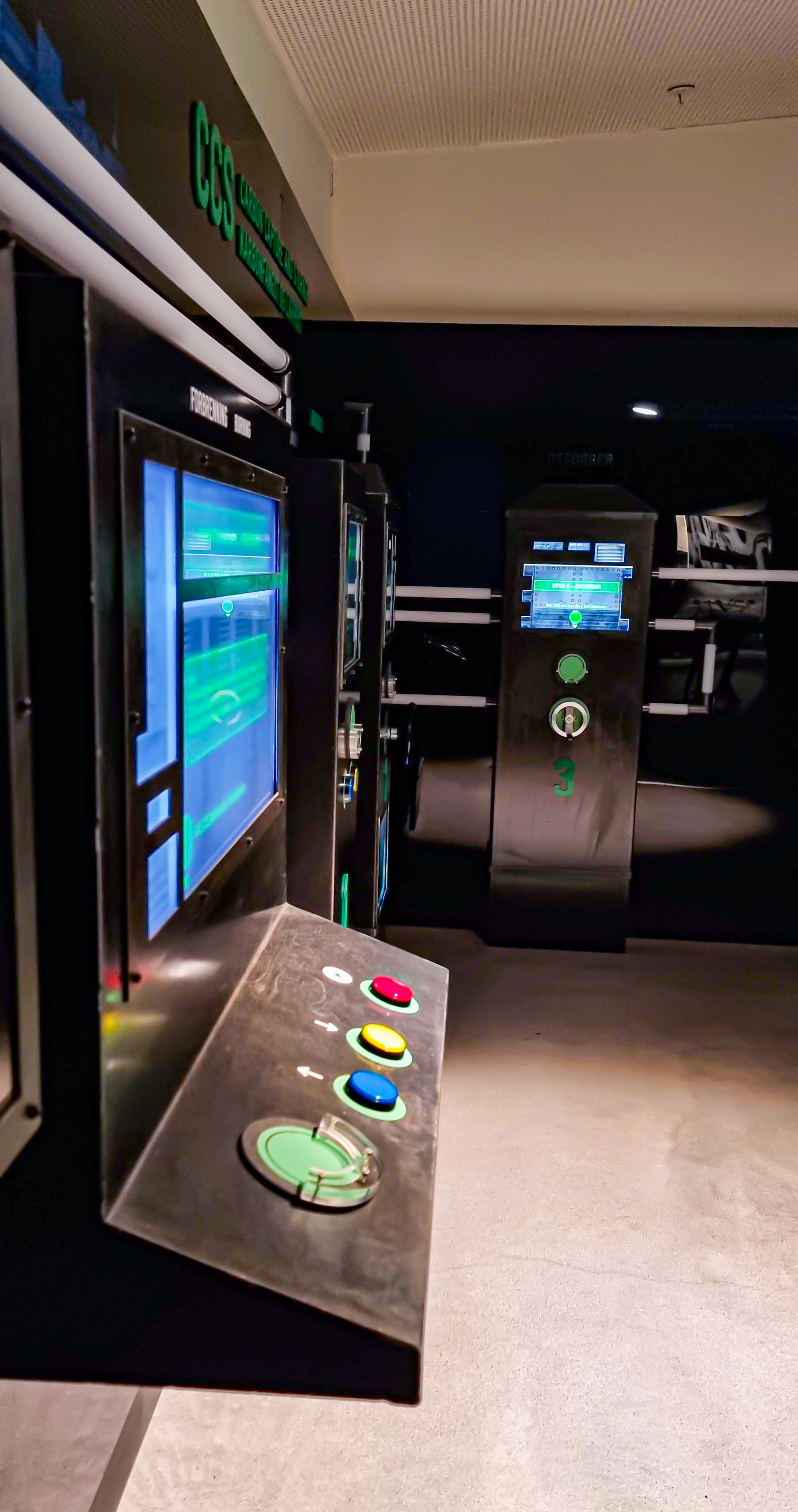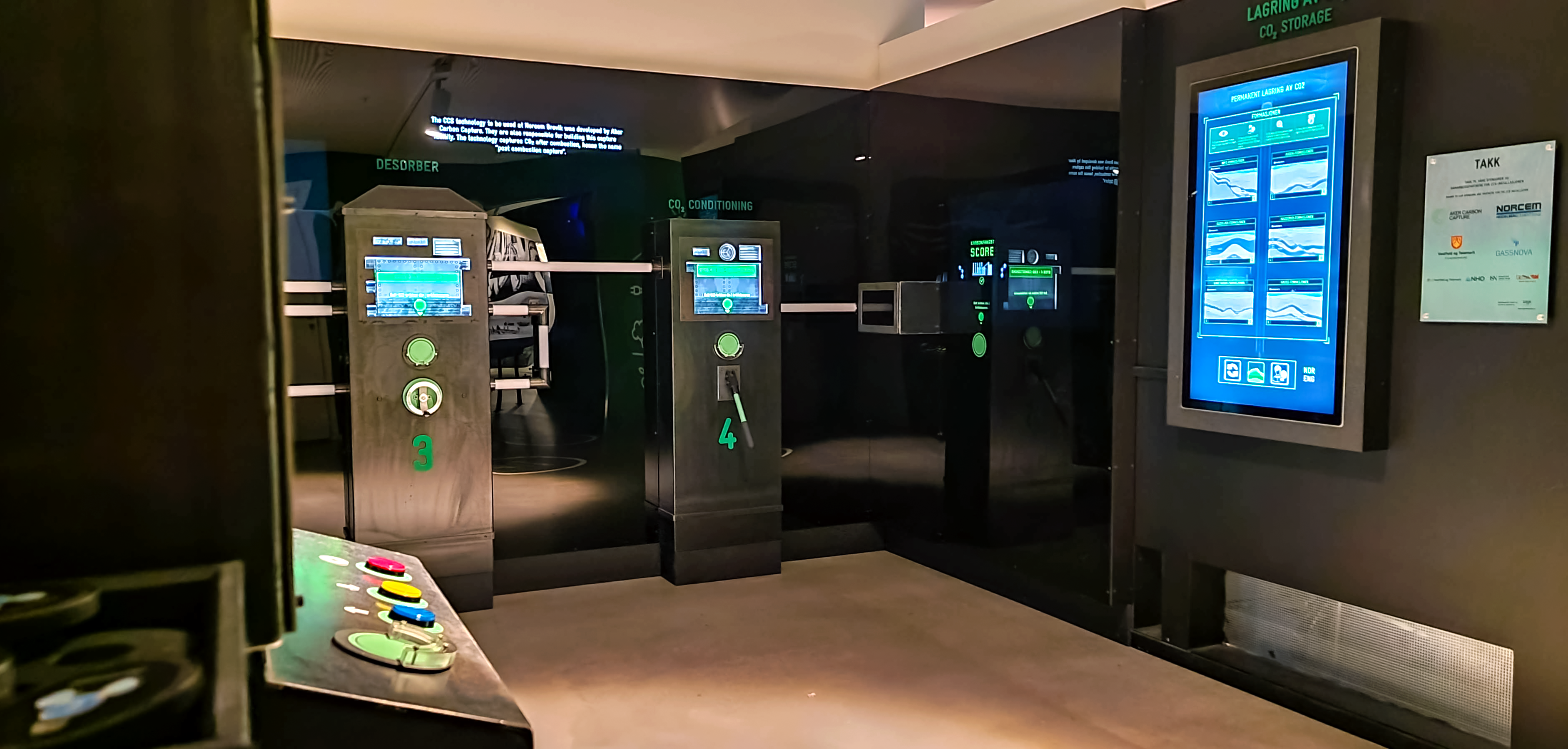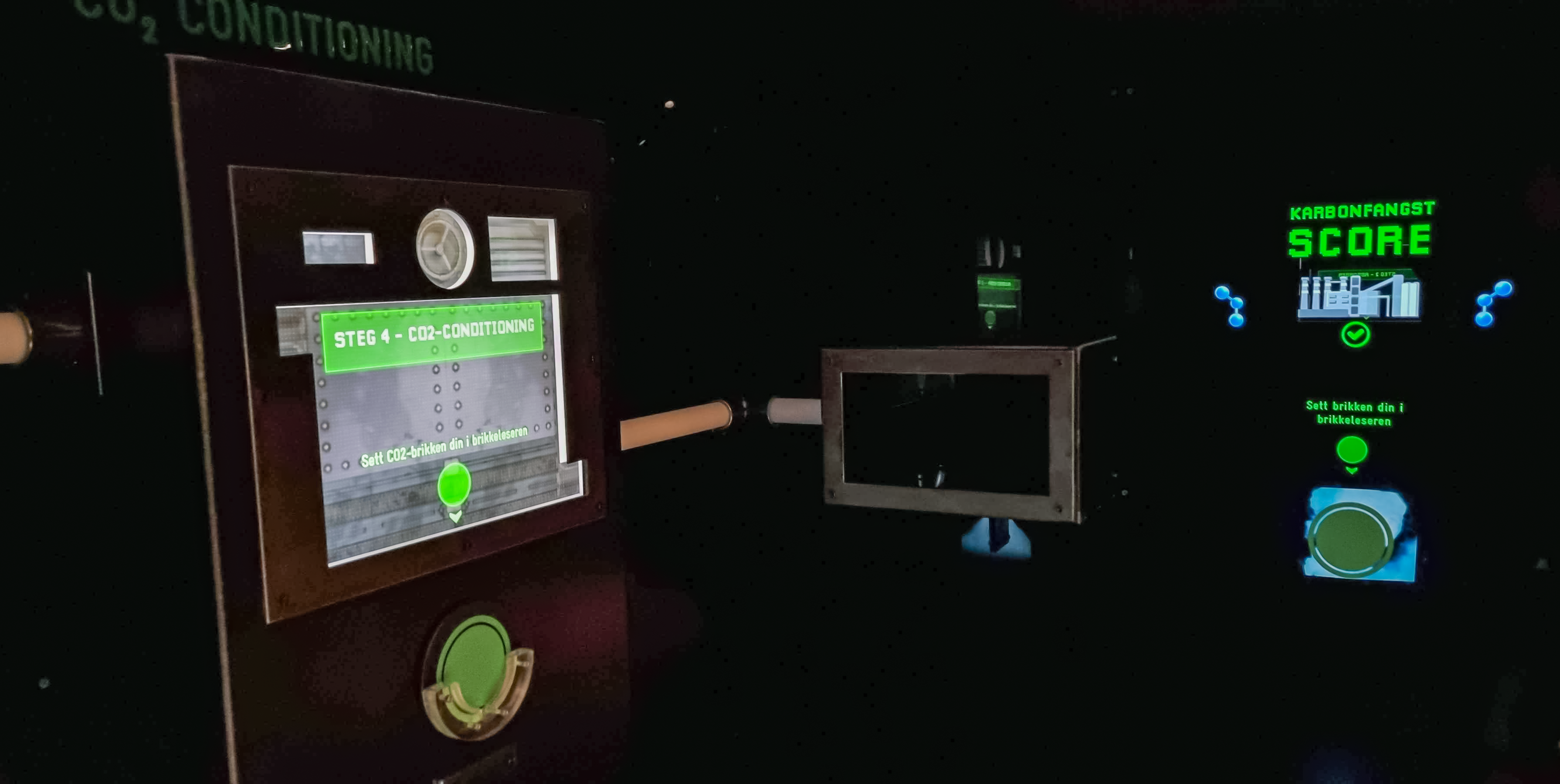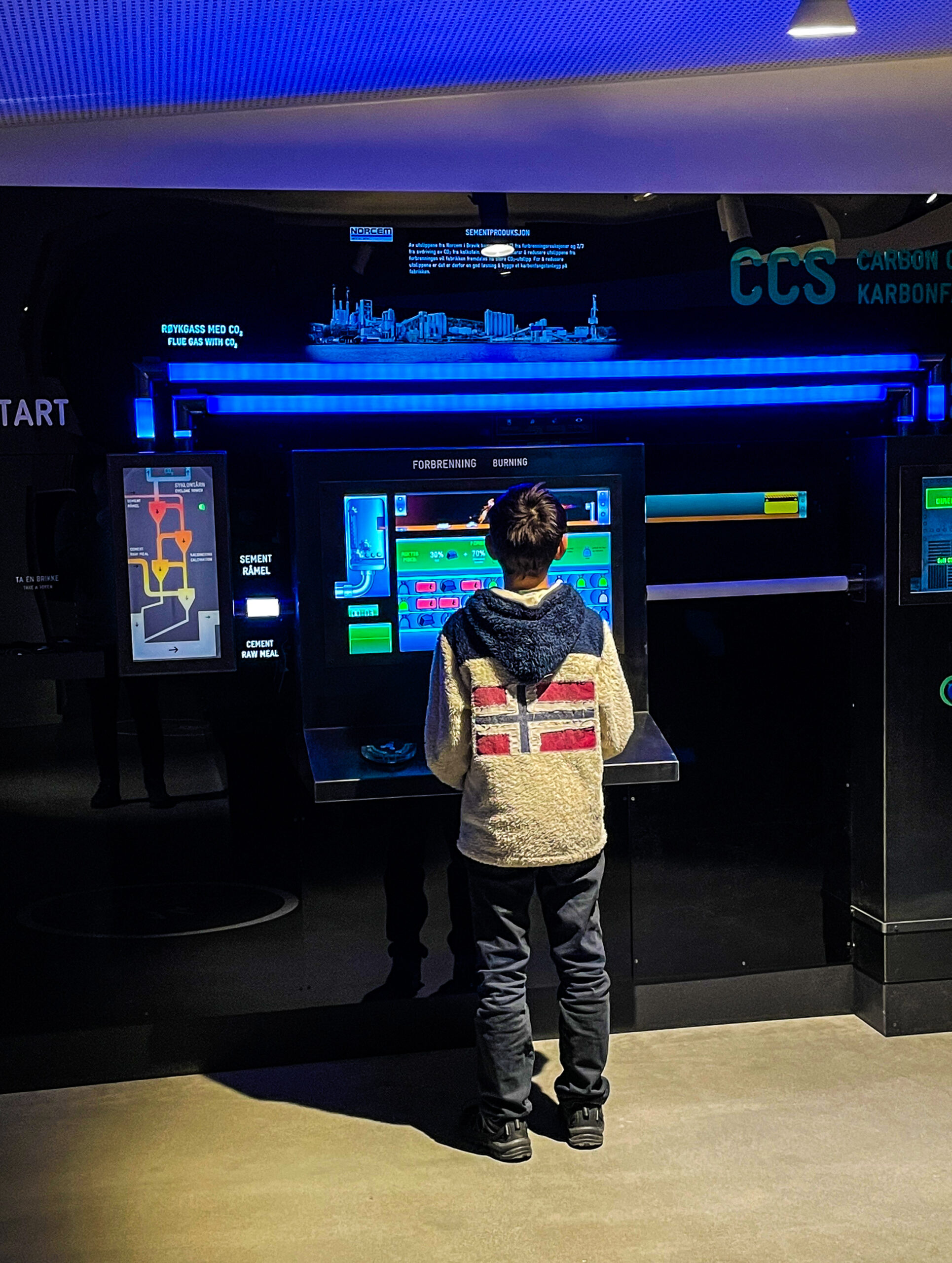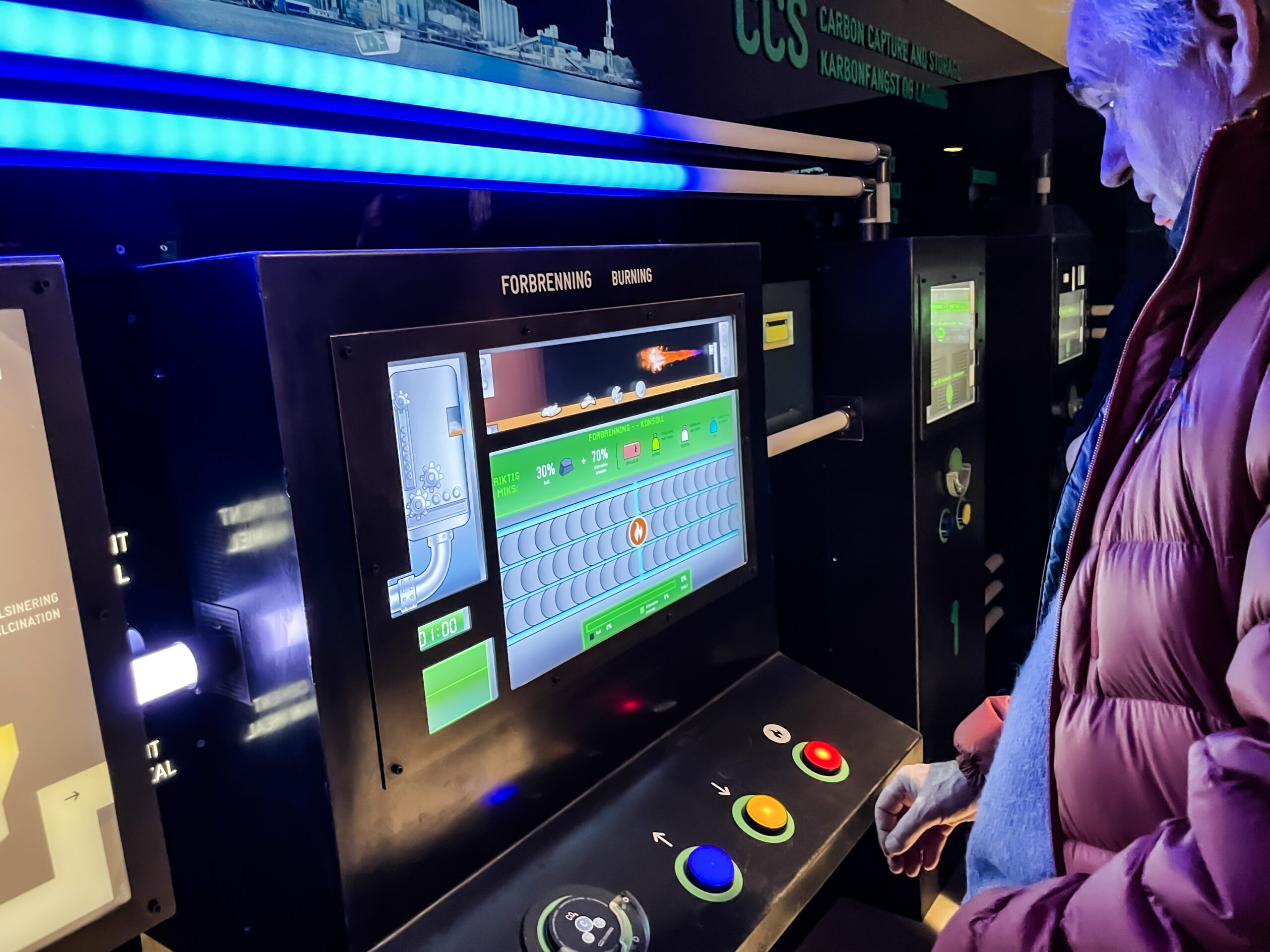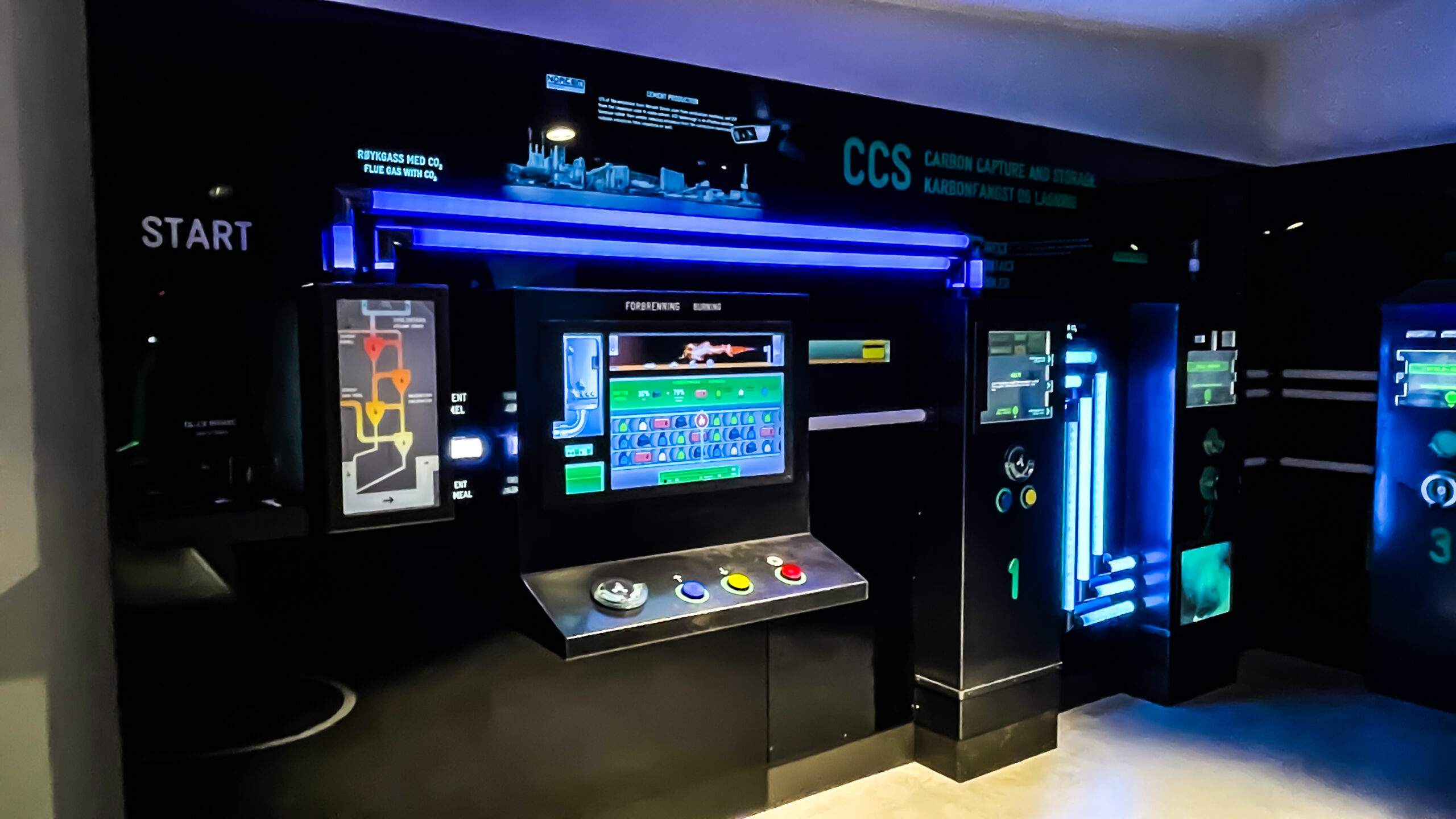
CCS CARBON CAPTURE & STORAGE | 2022
We need to reduce our carbon emissions to mitigate effects of climate change. The cement industry is one of the biggest contributors of CO2-emissions in the construction industry. Brevik CCS in Norway will be the first cement factory in the world to have a carbon capture facility that will reduce its CO2 emissions by 90%.
The technology behind this feat is CCS: Carbon Capture and Storage.
I was the designer in the team creating an interactive installation showing each step of the carbon capture process in the cement factory. Through physical, tactile inputs like buttons, levers and wheels, visitors can start different chemical reactions in each step of the CCS process. After each step, they get feedback on the process and they can see the CO2 move from step to step in the light tubes above.
A CCS-token is used to activate the installation. The token also activates each step in the process, and it saves the visitors’ points and statistics.
The visitors can see their score at the end of the installation and they are invited to continue in the next station: “Storage”, where they have to choose a geological formation underwater that is best suited to store CO2.
As part of the concept development for this installation I visited the factory and dove in the research and data of the Northern lights project/CCS at Brevik CCS. I worked with translating the real-world process of carbon capture in this cement factory into an engaging, fun, physical interactive experience that would appeal to the science center’s audience: the general public.
It was important to maintain the factory’s look and feel in the installation to create an immersive experience. Likewise it was a must to break down each step into easy interactions visitors could remember and understand. Each step was made into a mini-game that follows the CO2 that is emitted both in the factory and in the burner as it travels into different steps in the CCS facility: CO2 is separated from the flue gas- and is finally compressed into liquid form for transportation and storage.
I designed the overall look of the installation, as well as the graphics and interface of the mini-games. For the gas/particle animations I used a real-time physics simulator (Niagara in Unreal Engine).
Together as a team, we tested the interaction and the flow of the whole experience, and the set-up team worked hard to physically mount this installation together, as it has many different elements in each station: computers, sensors, lights and speakers, all wrapped up in custom-made furniture covered in factory- steel casings, with a backwall made in black acrylic with light boxes and screens behind.
Acknowledgements
Developed by Logic Interactive
Client: DuVerden Maritime Museum and Science Center
My role: concept development, exhibition design, user experience, animations, interaction and digital design, graphic design
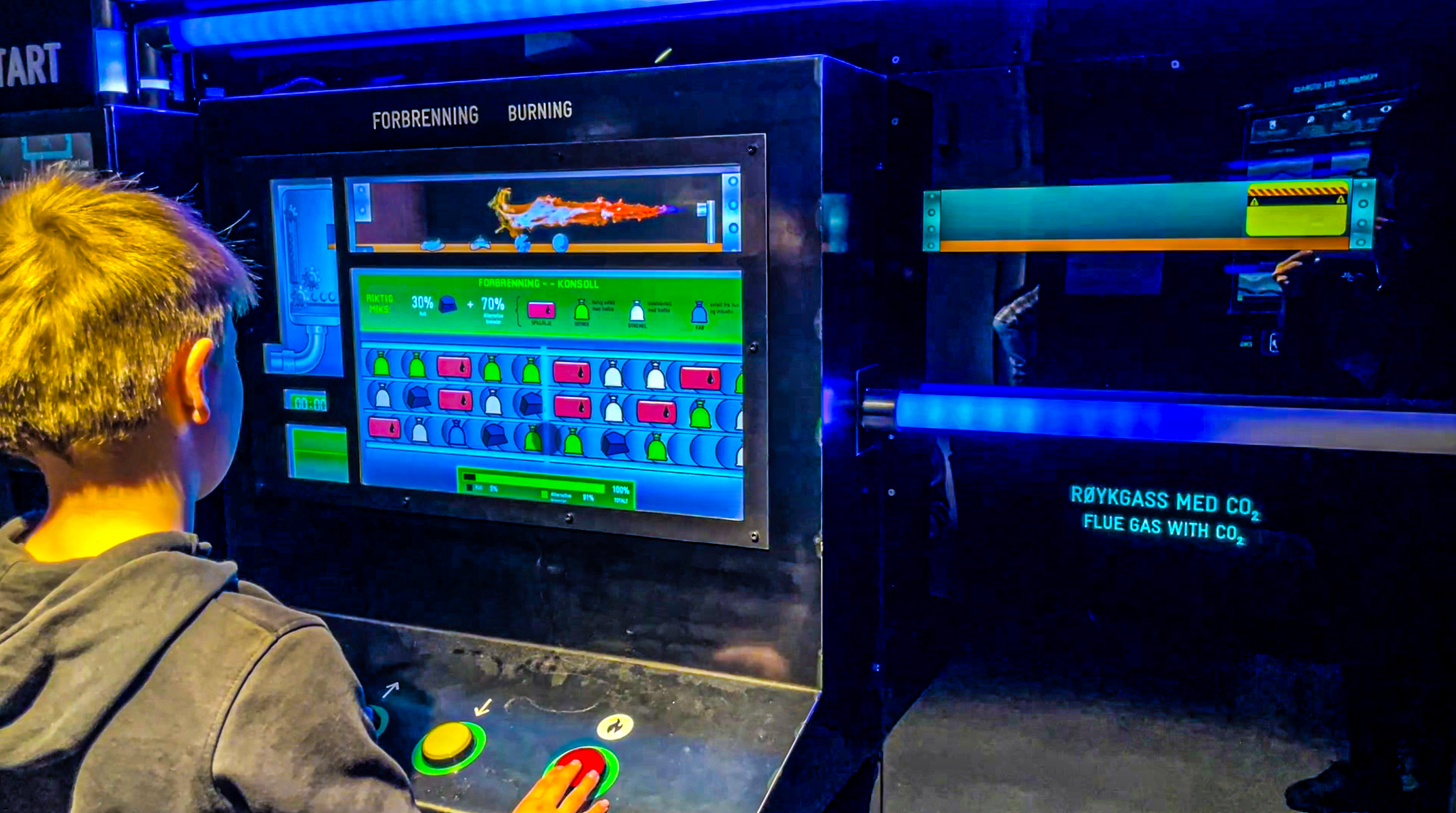
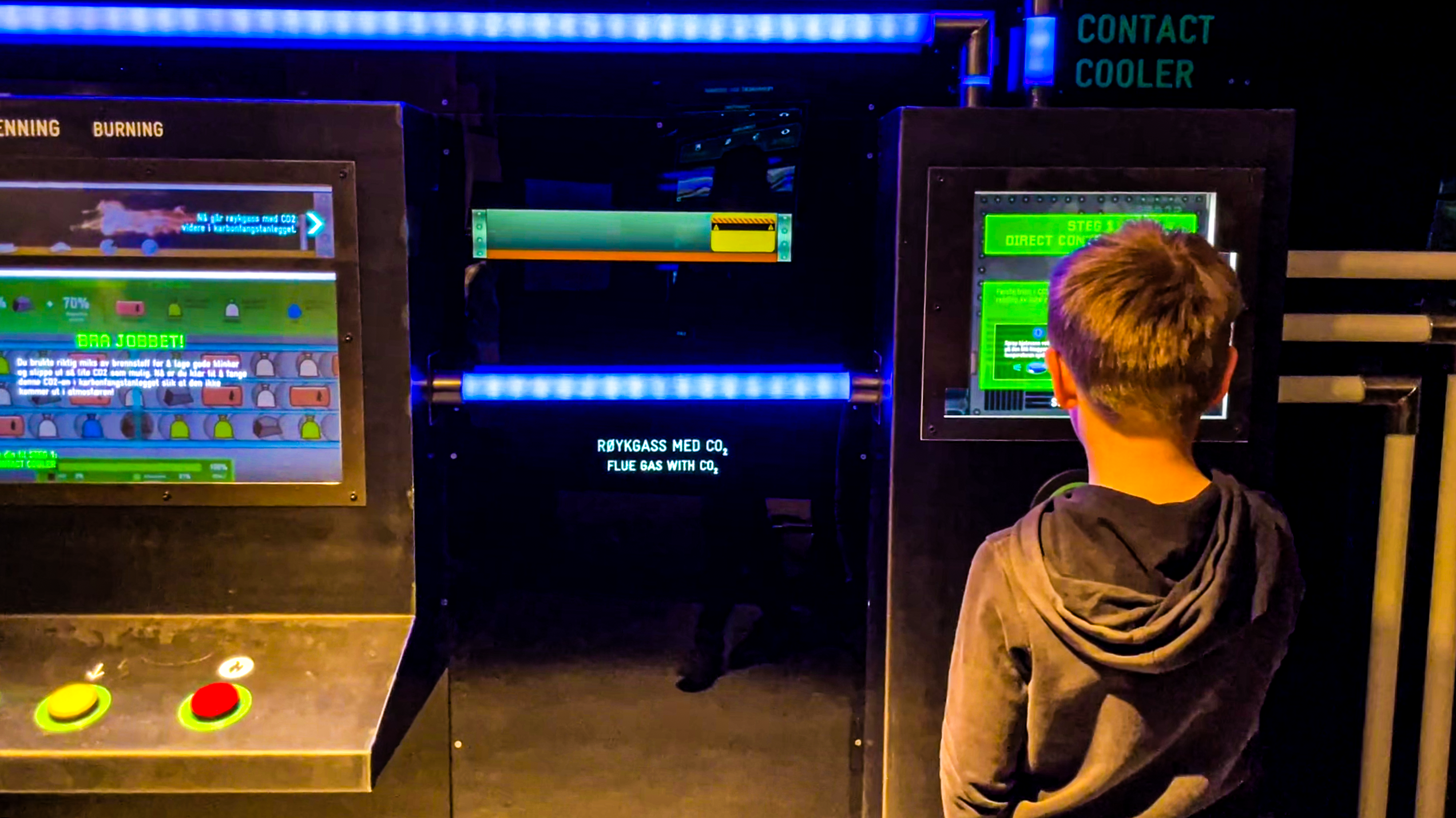
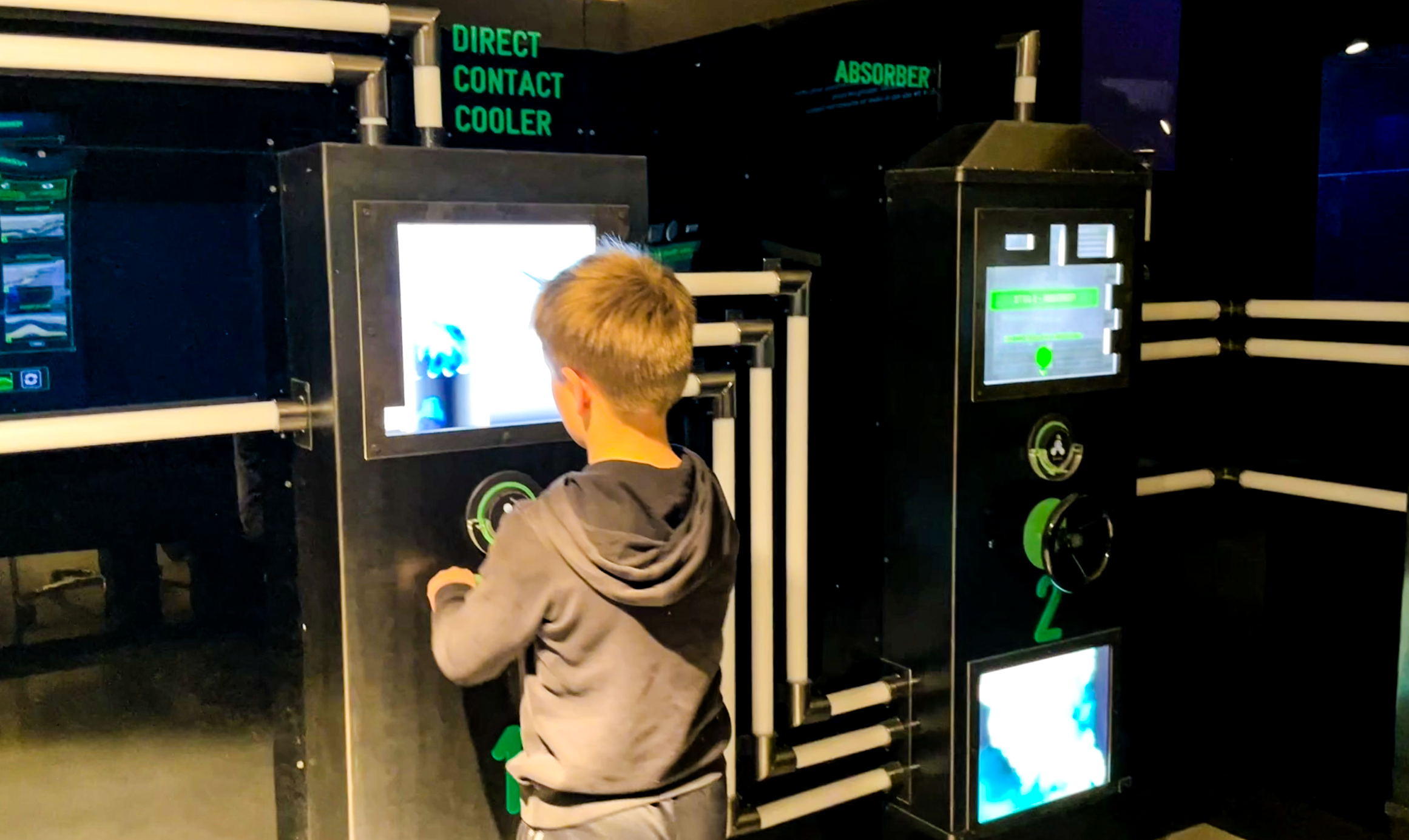
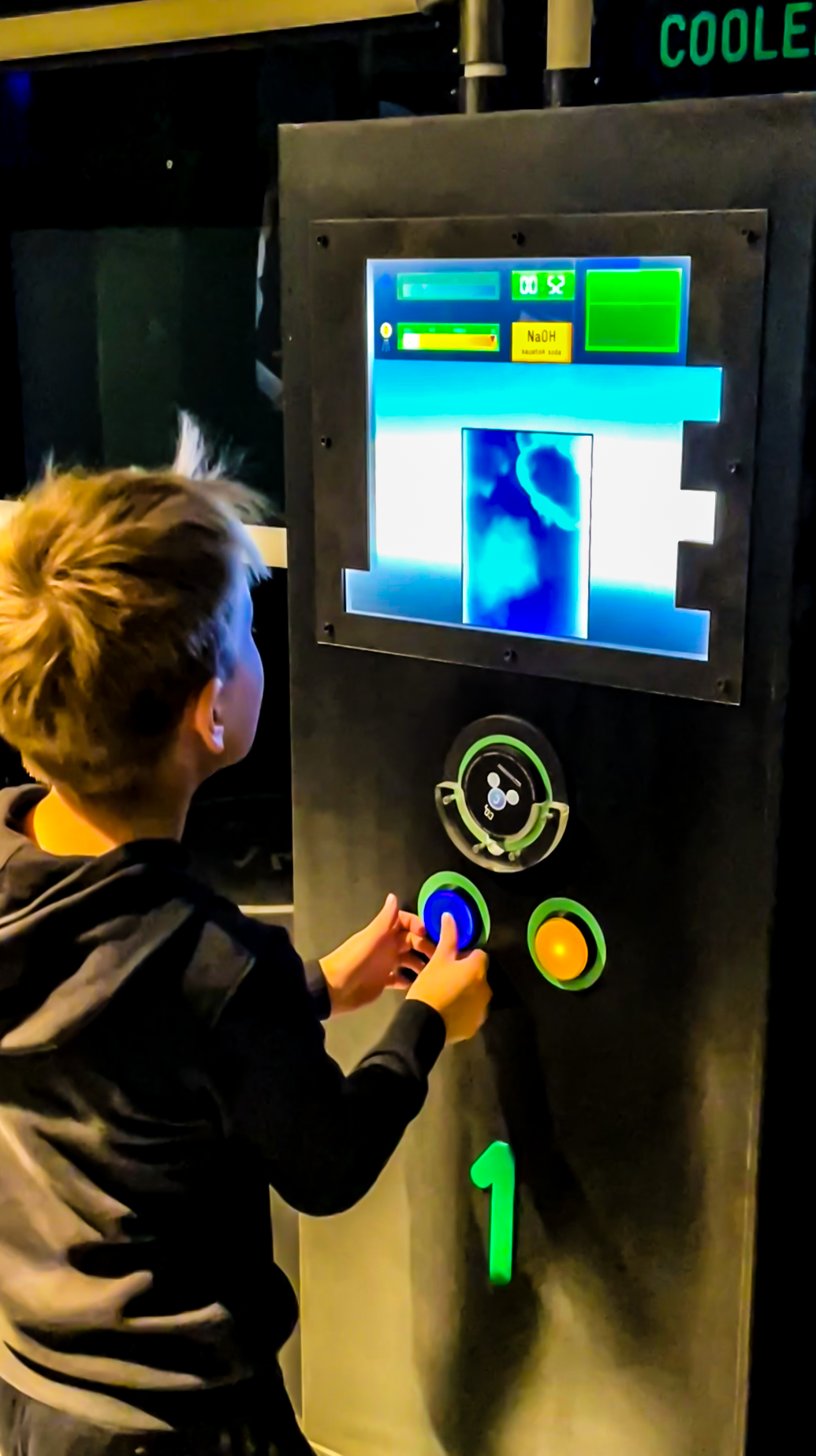
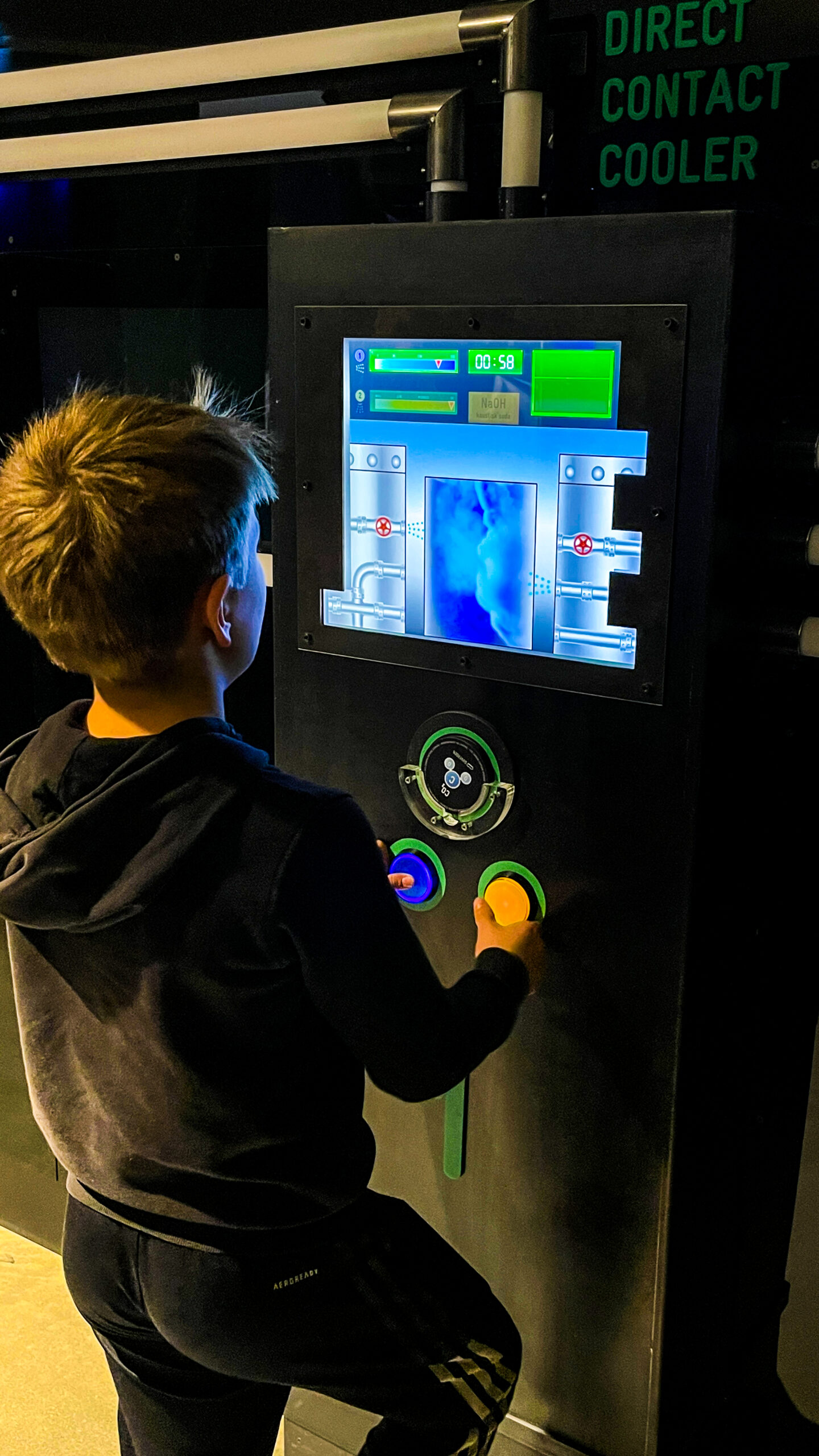

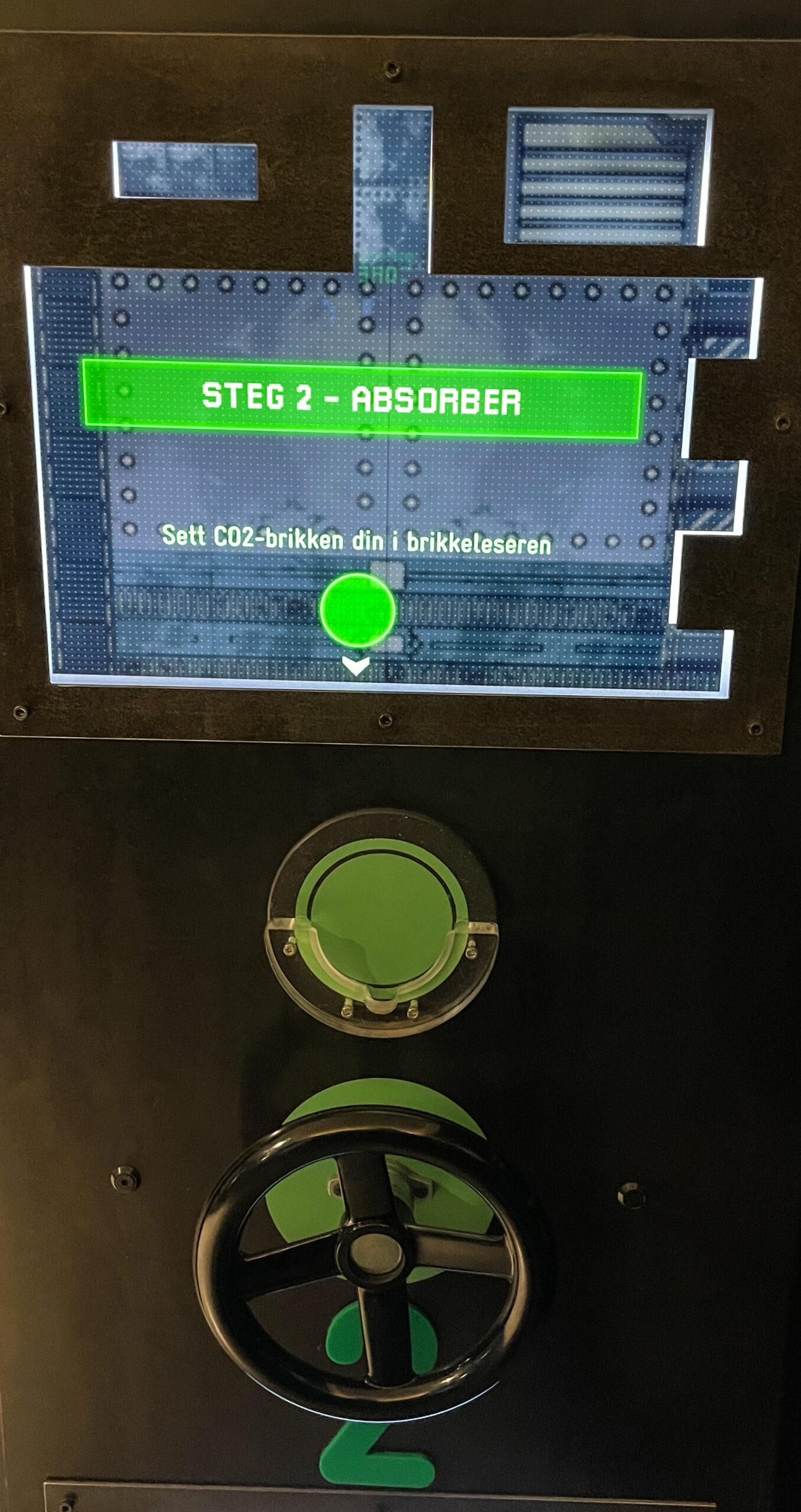
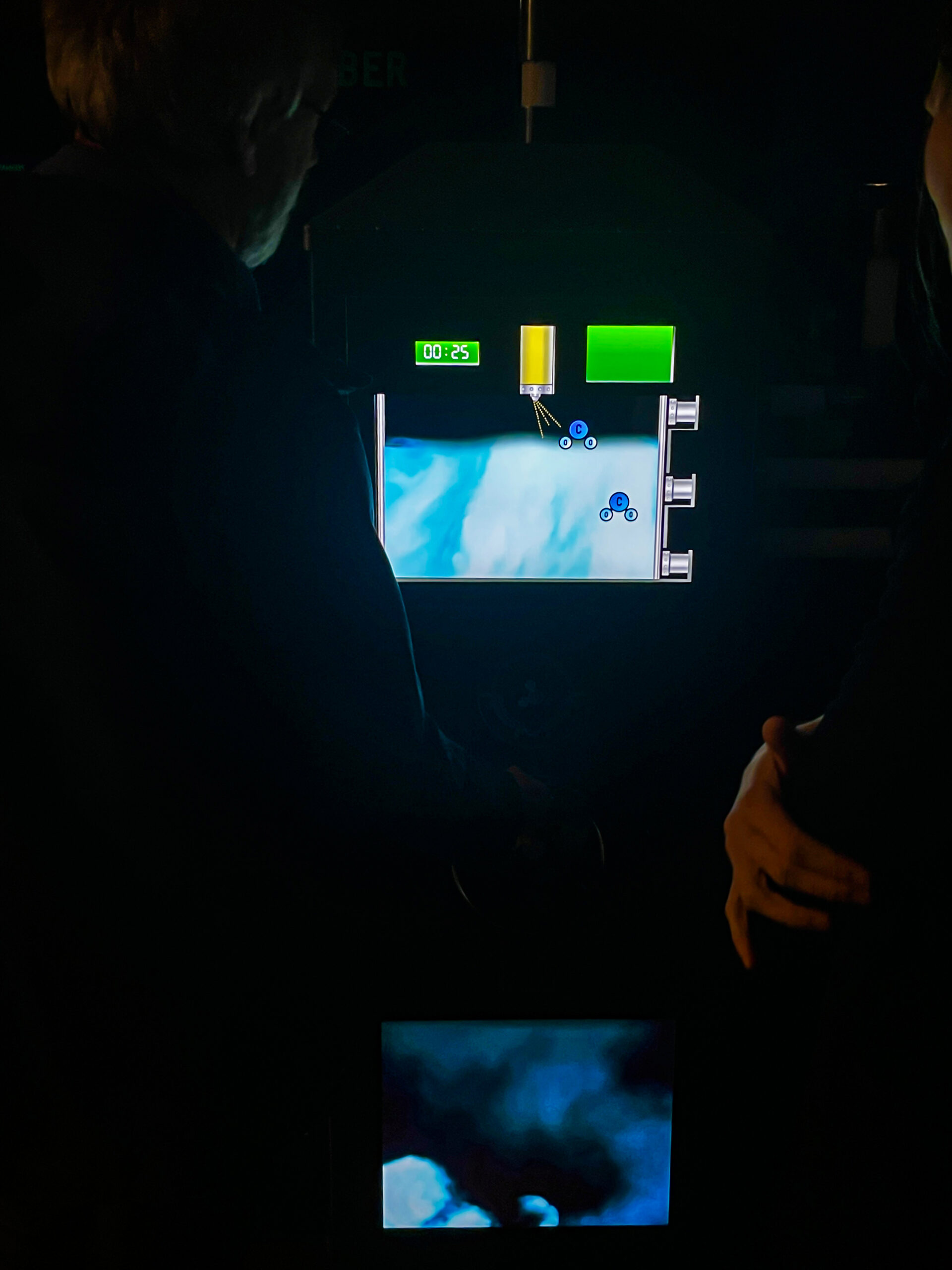
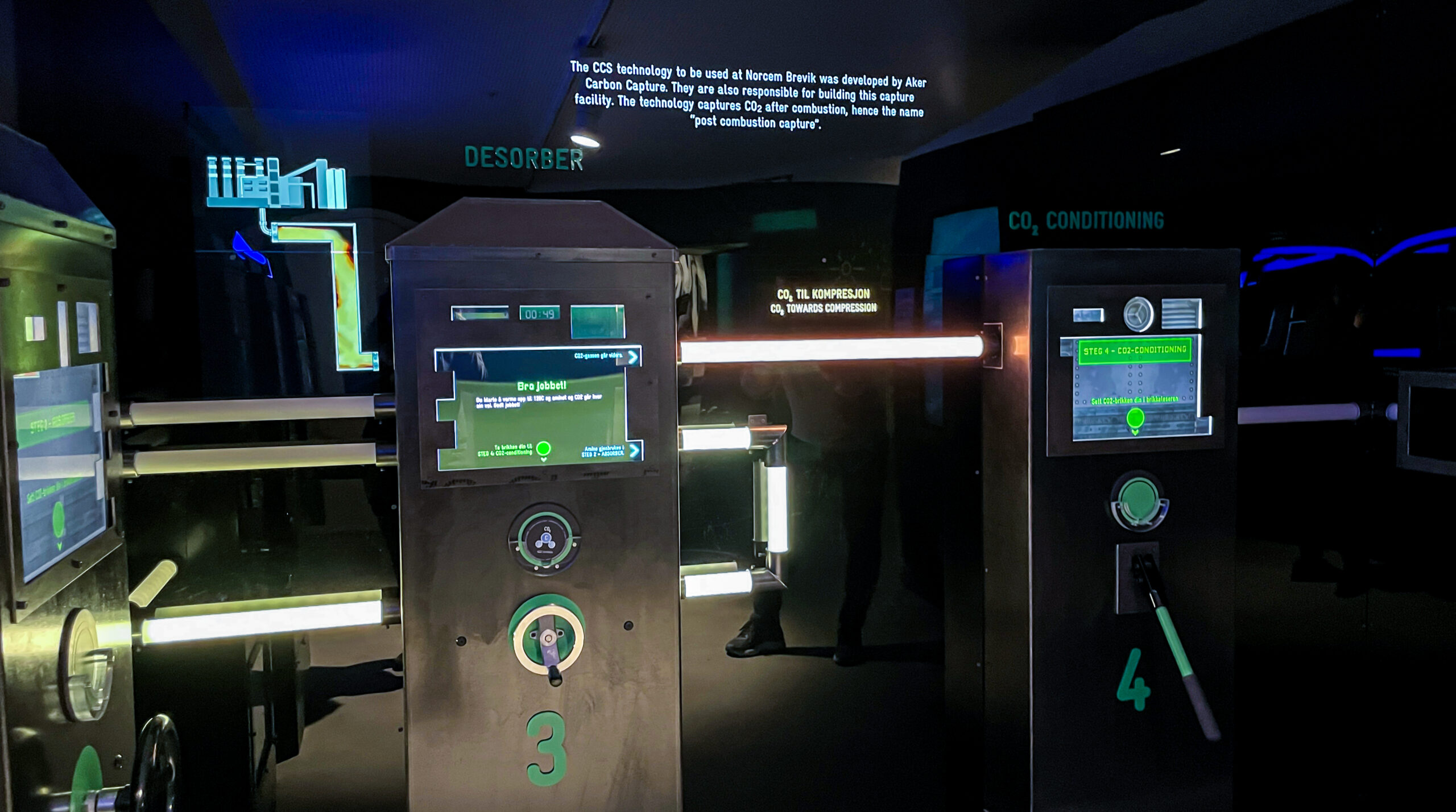
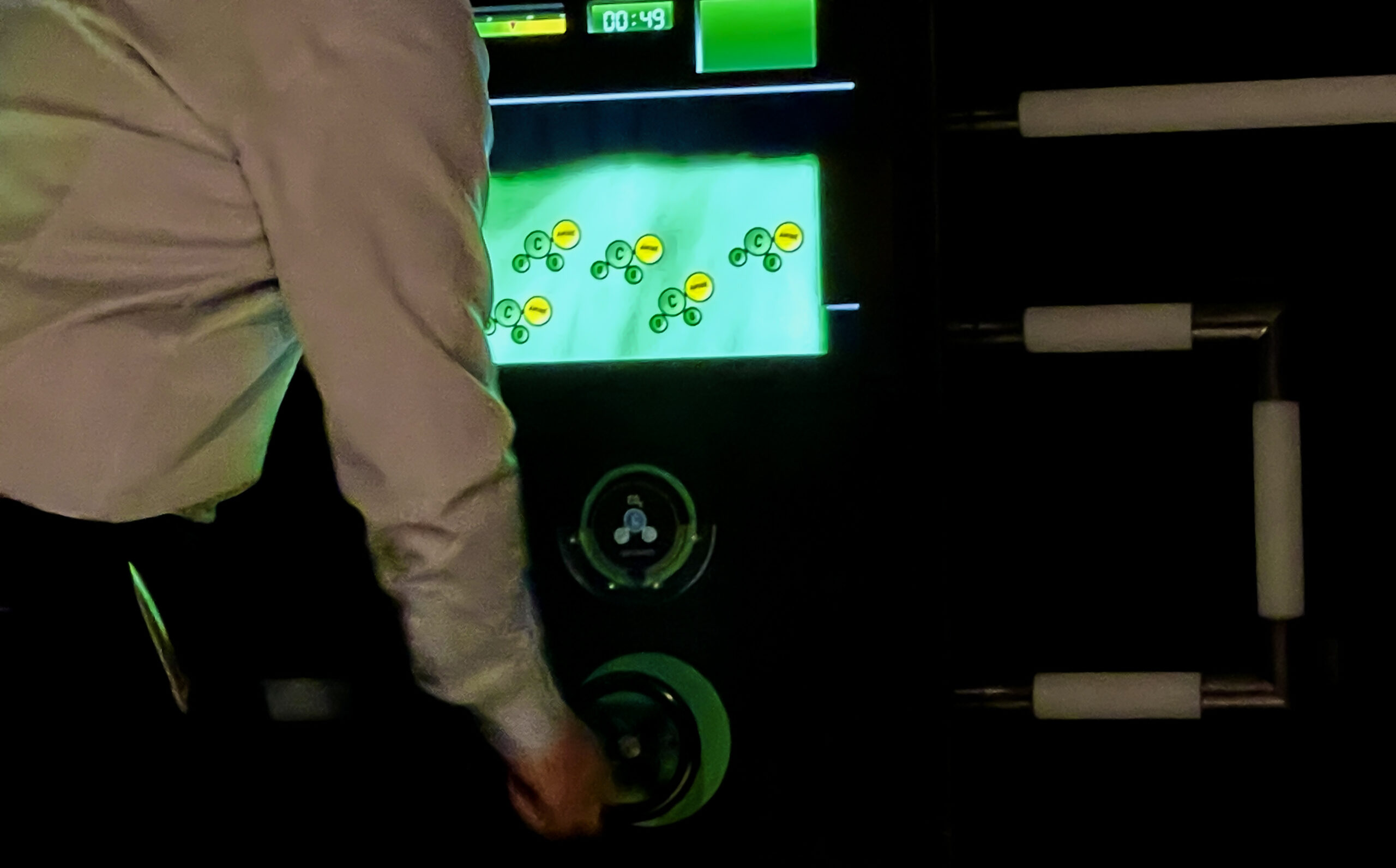
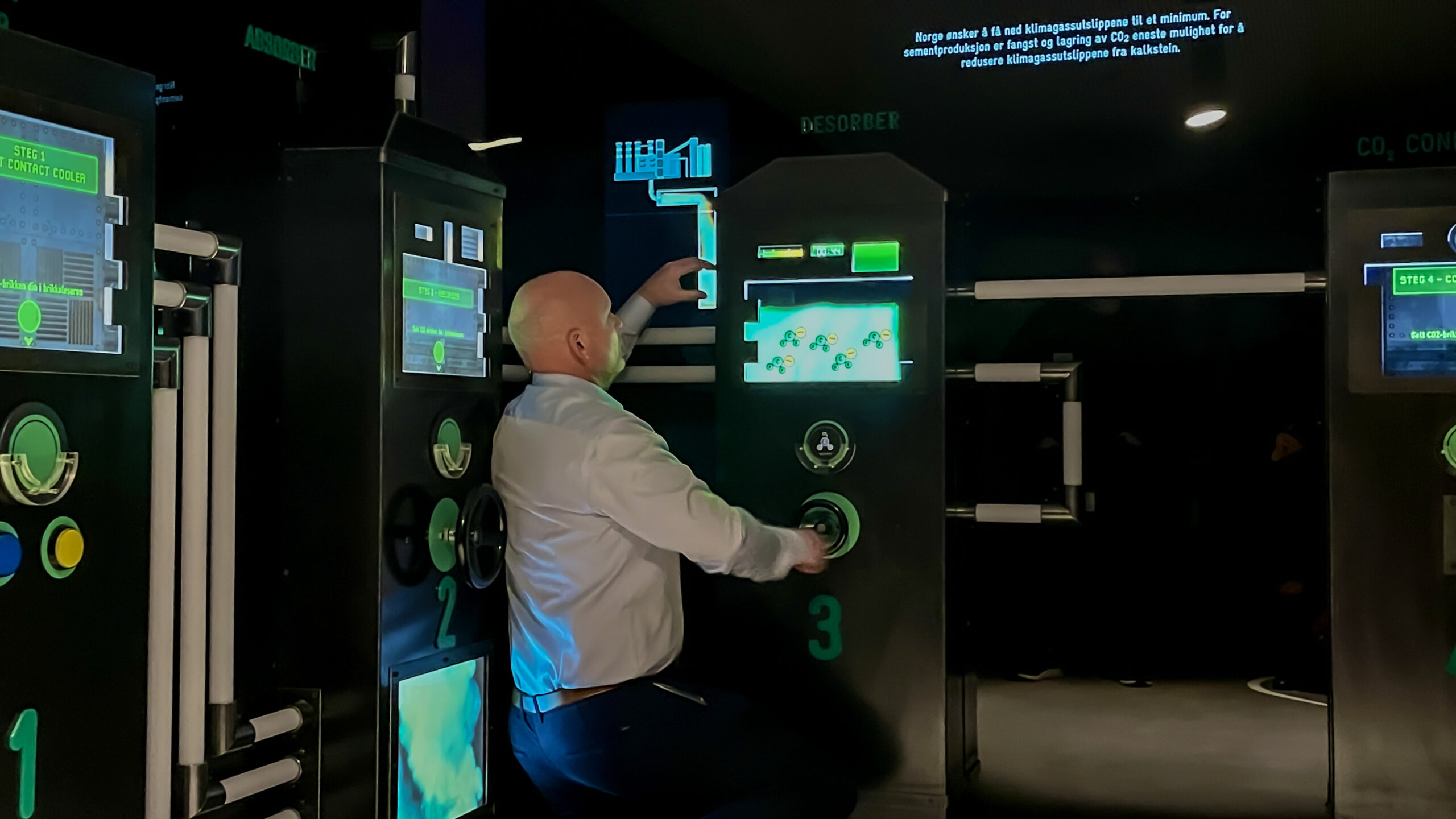
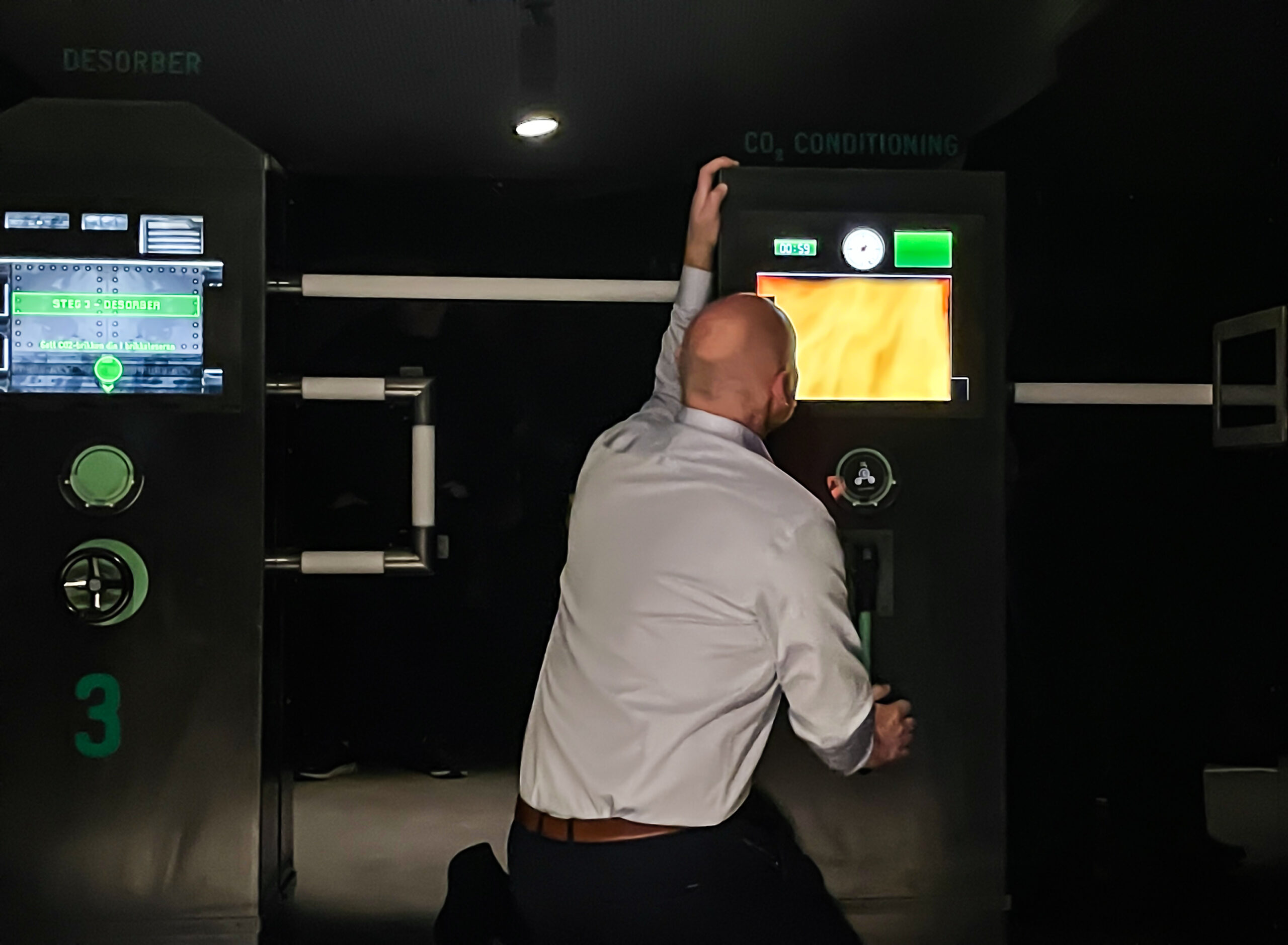
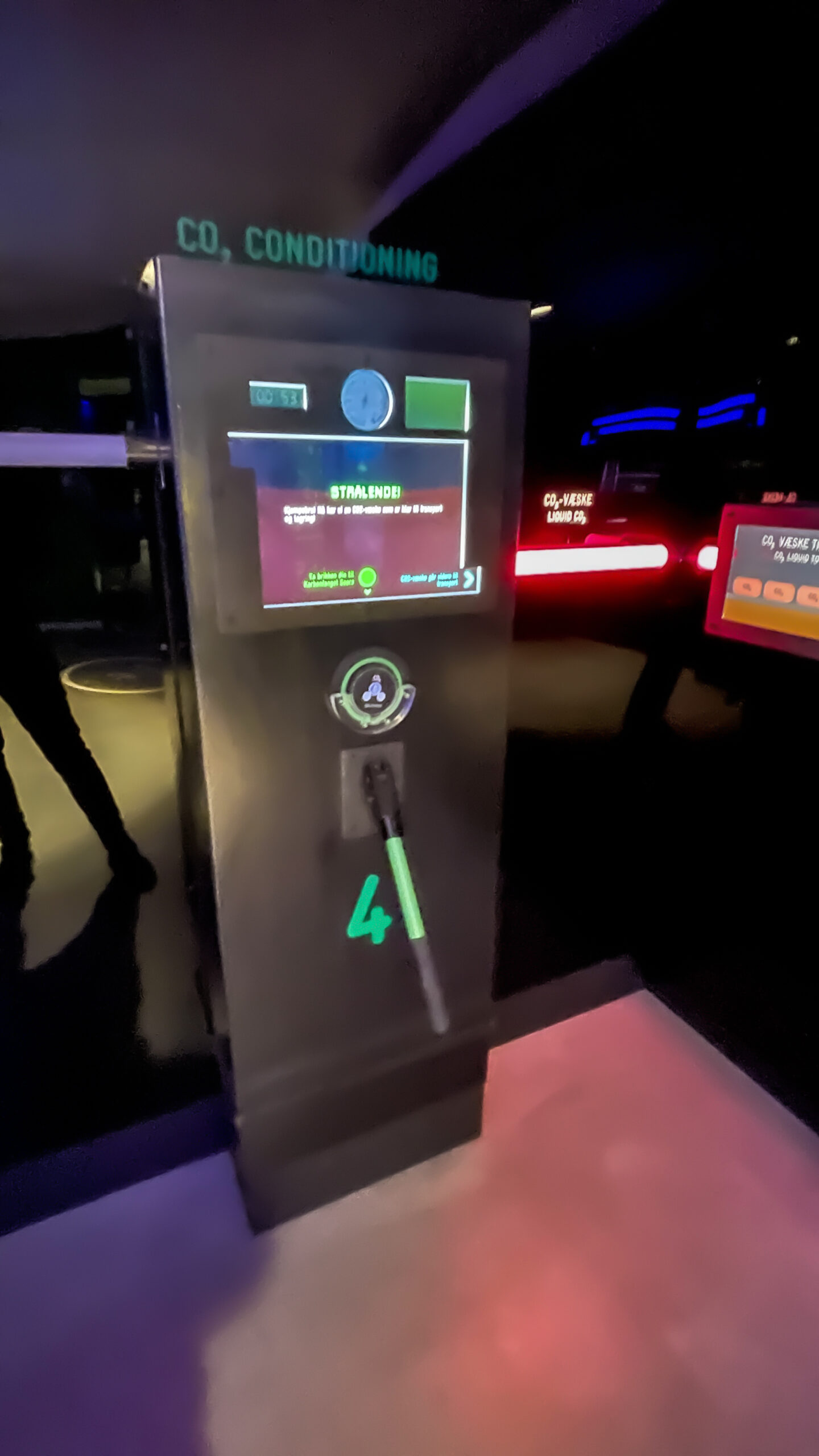
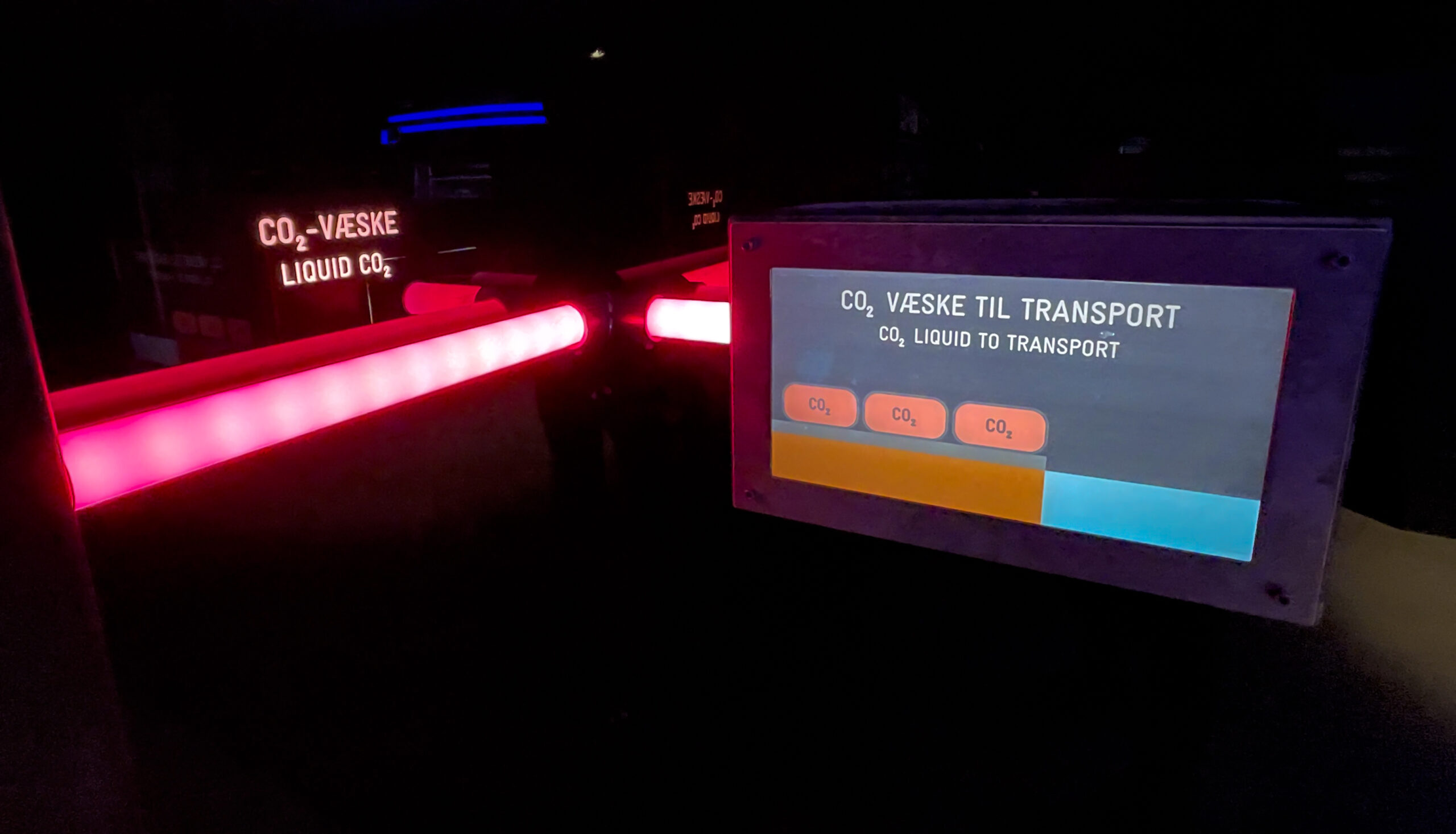
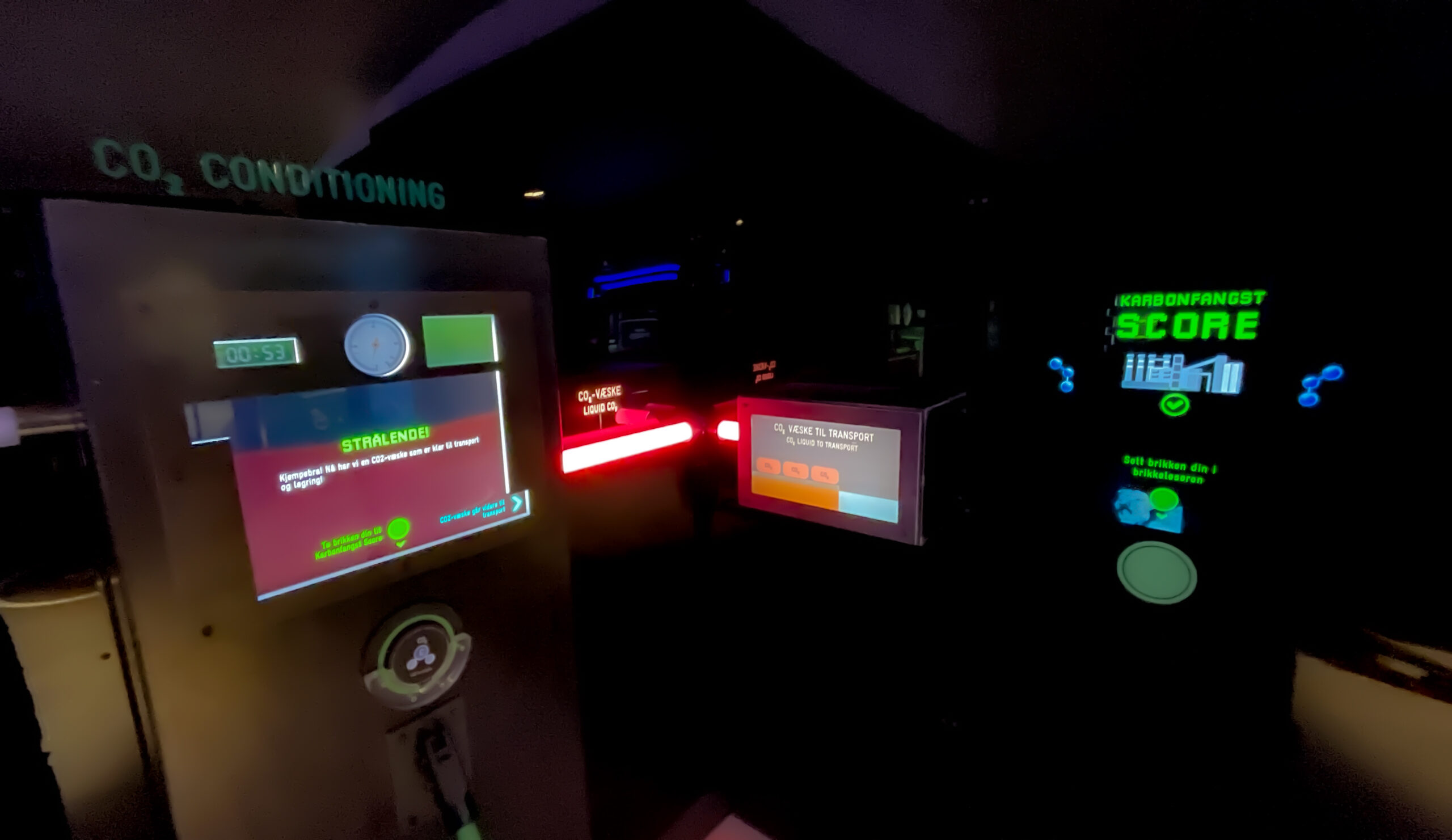
The “Storage” station at the end of the Carbon Capture & Storage installation:
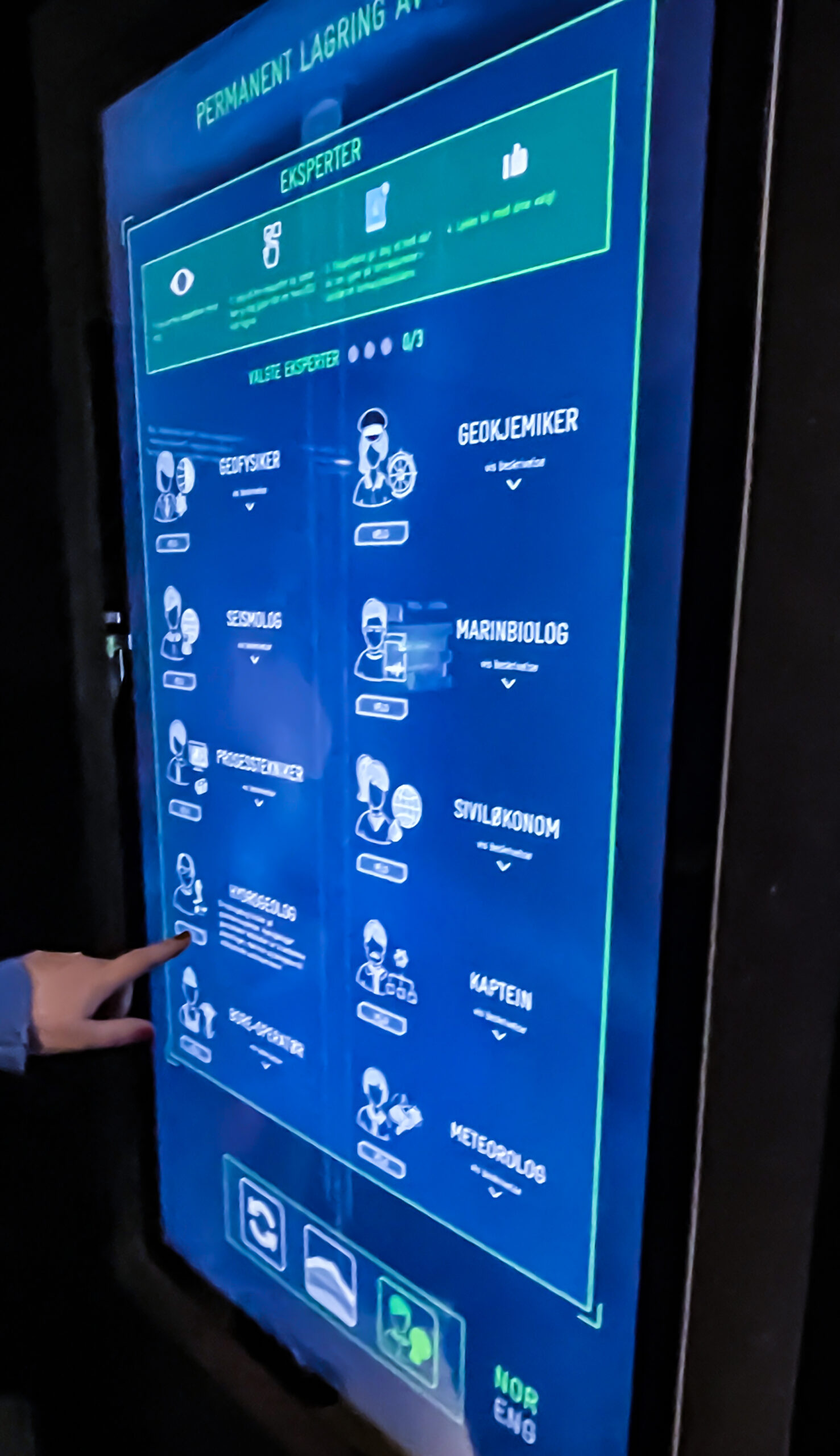
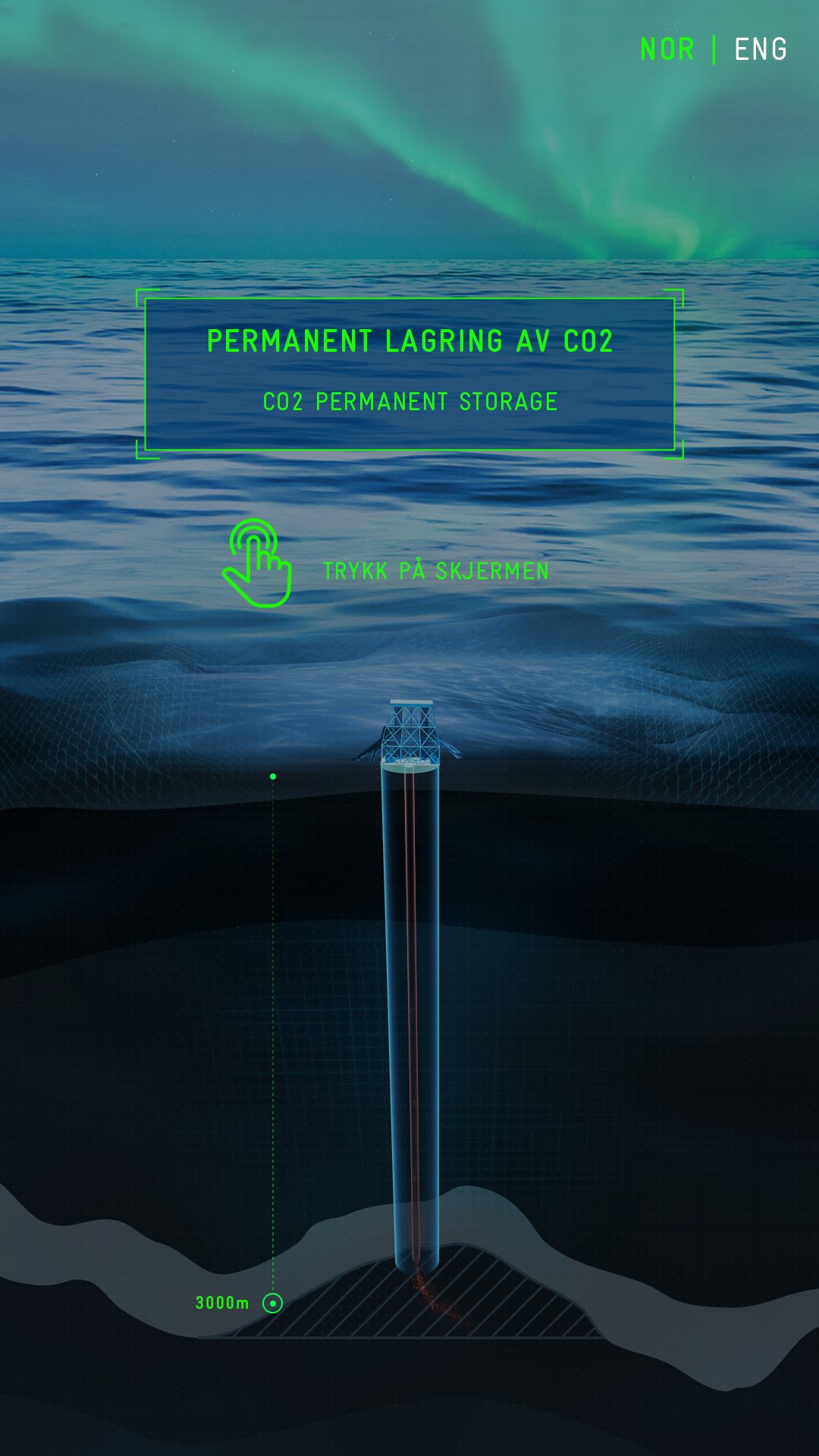
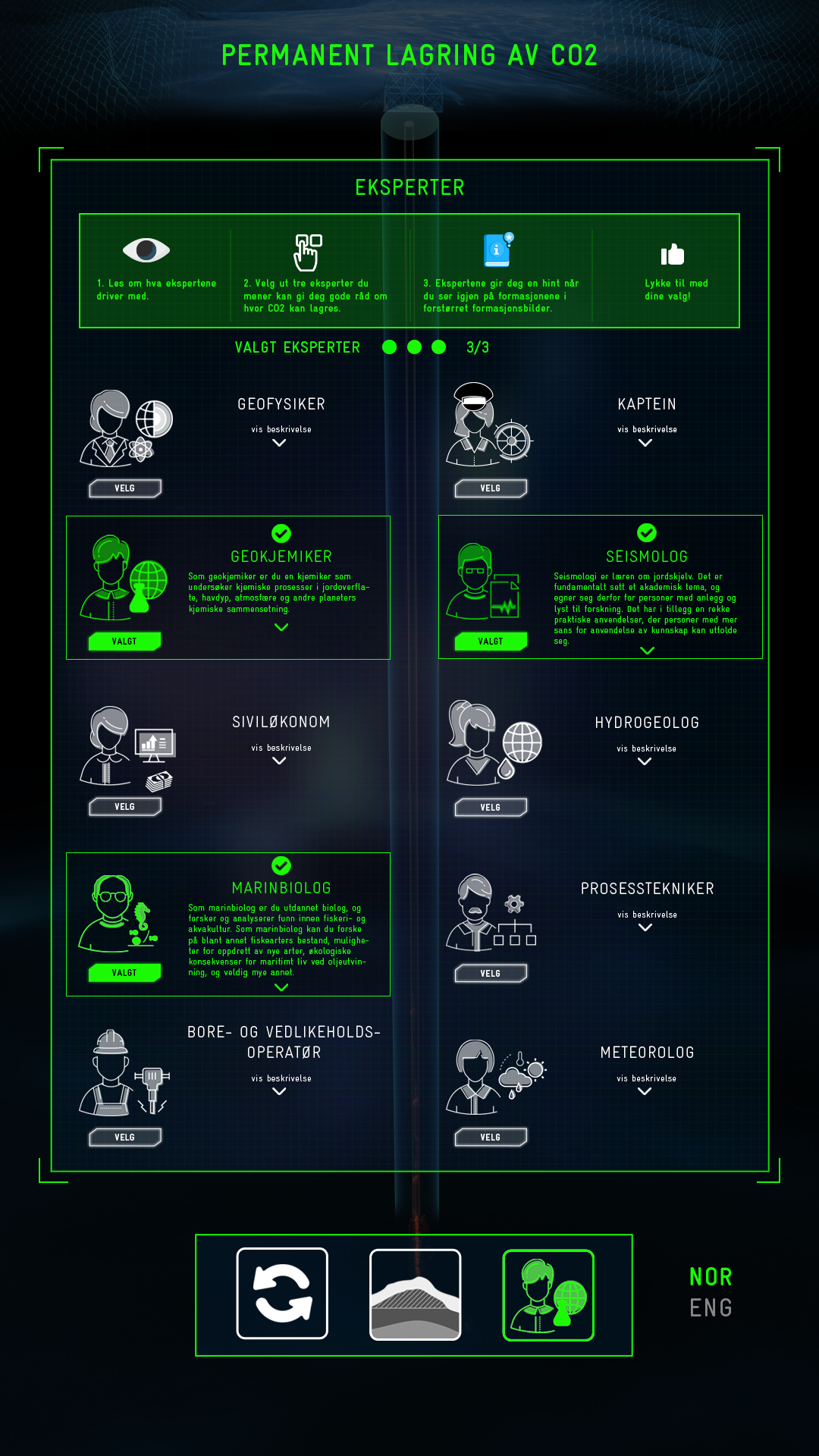
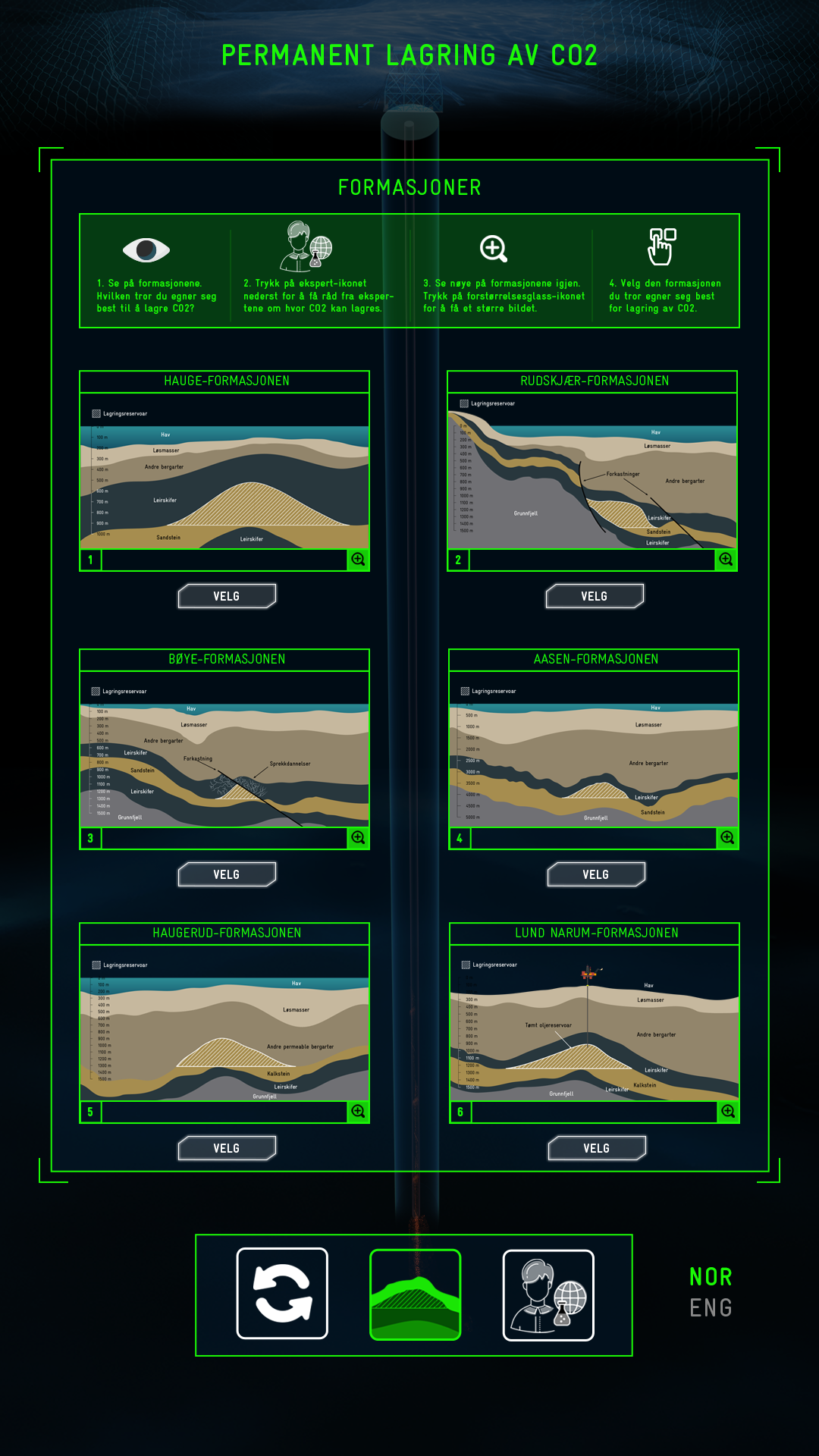
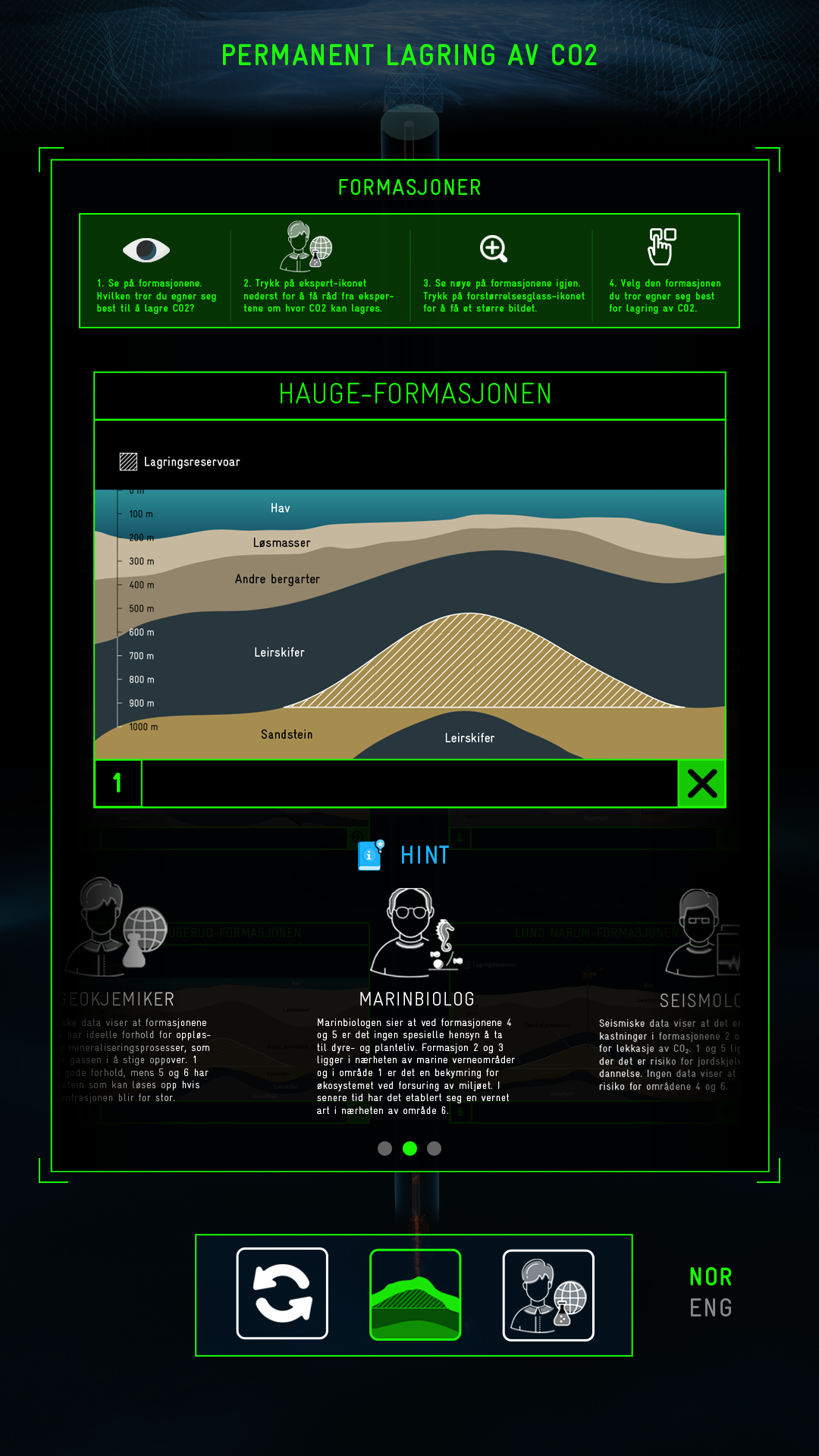
Details highlighting interaction inputs and the glowing lights above where the “CO2” moves from stage to stage:
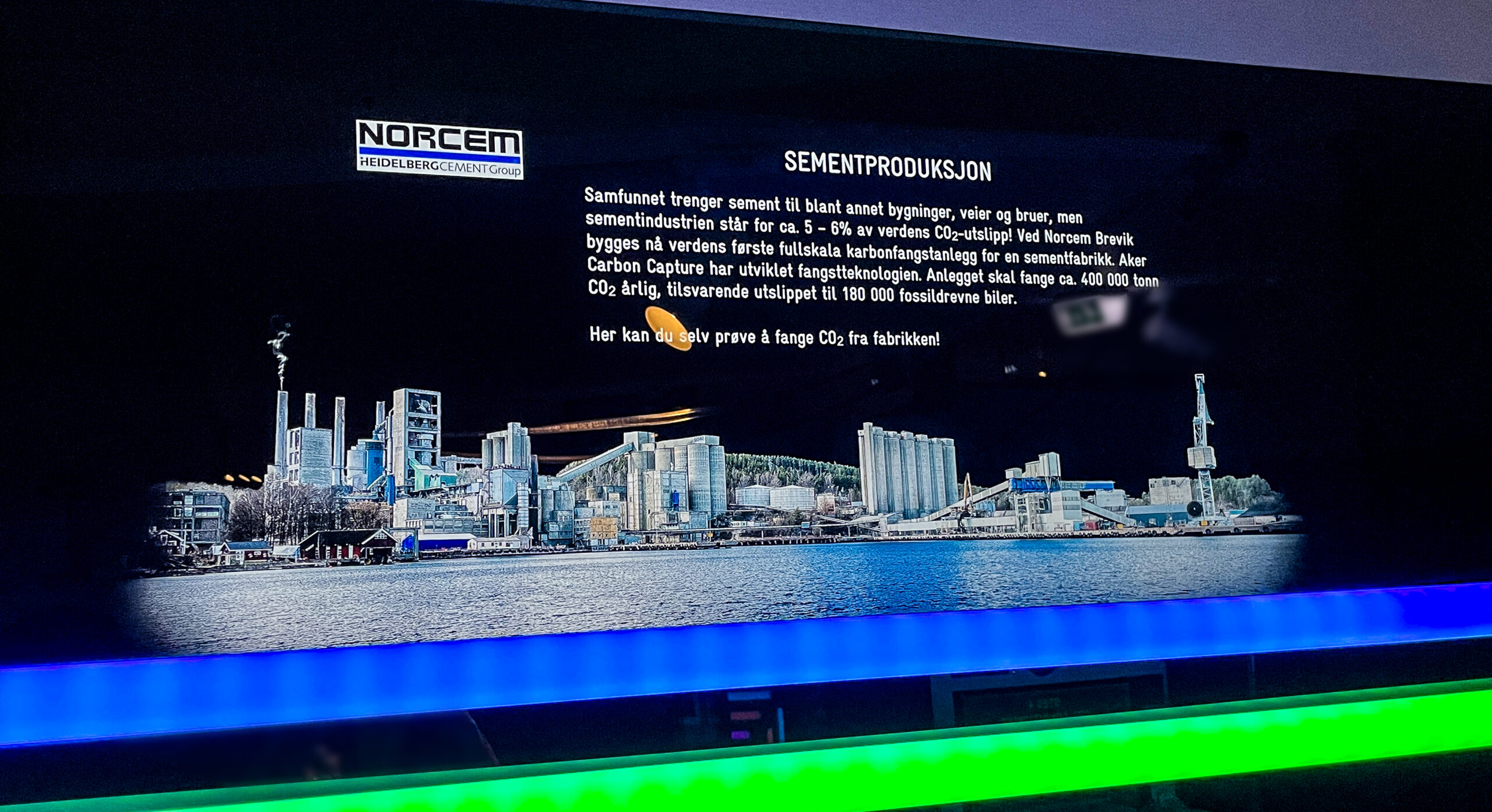
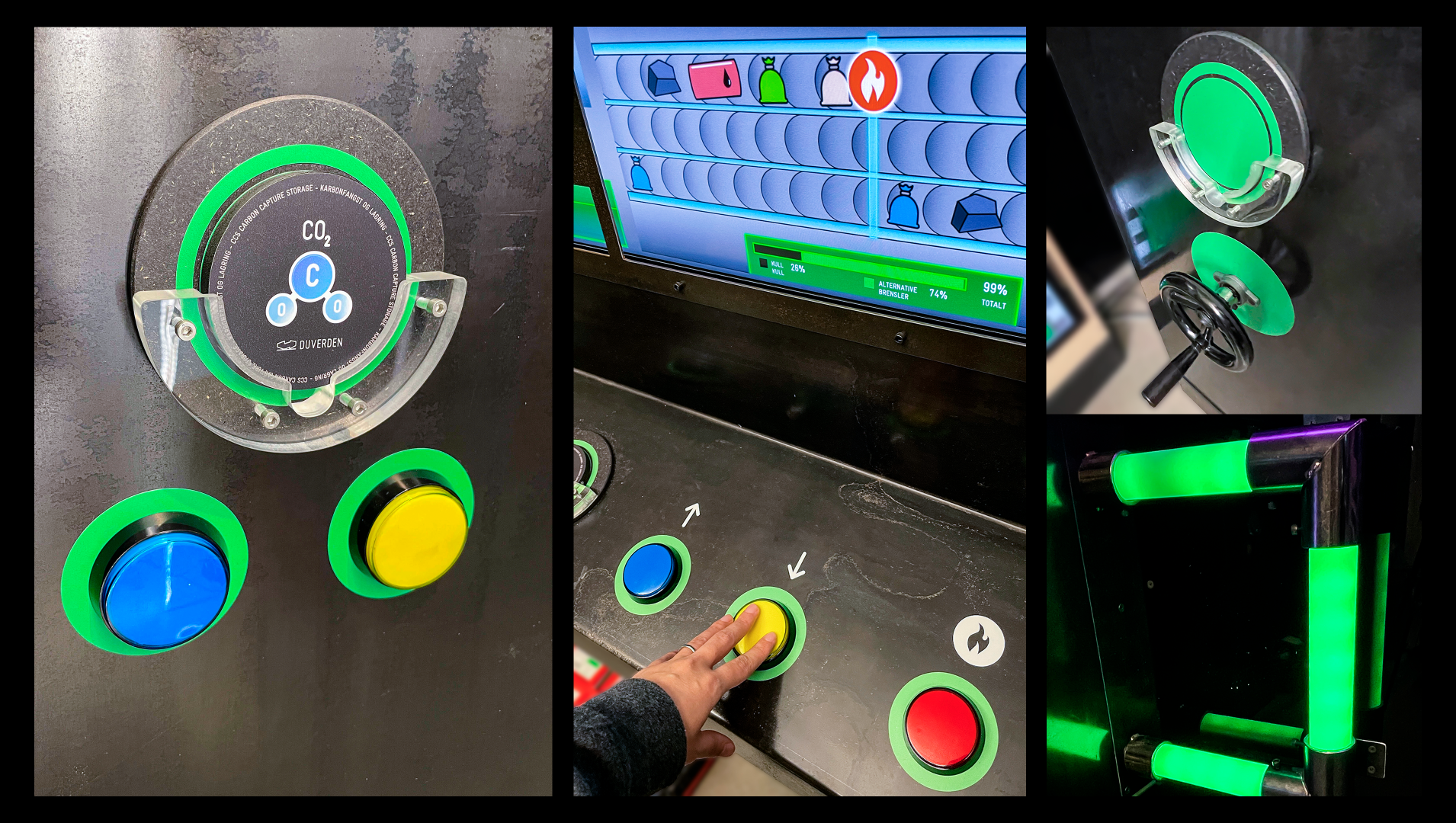
Installation overview:
